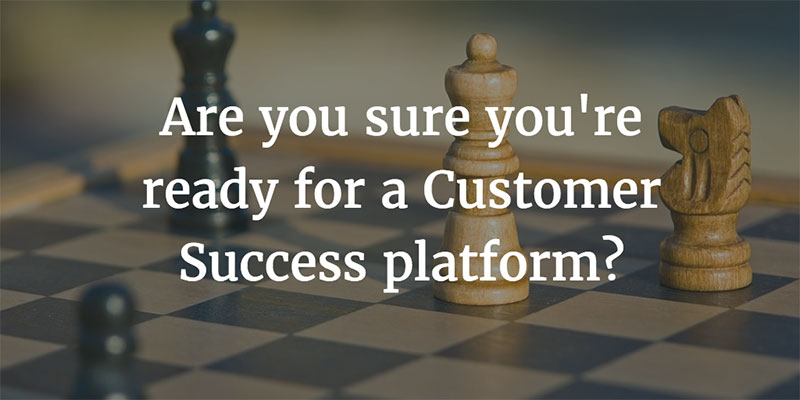Foreword
By Dan Gamito
After working with dozens of hyper-growth SaaS businesses, we’ve seen some fascinating patterns emerge. One of the patterns is that most Customer Success platform implementations take way longer than expected.
When a team gets to the point where they need a dedicated Customer Success platform like Gainsight, they’ve probably long since reached the capacity of their current systems.
Critical account data lives in multiple places, some of which needs to be manually synchronized between systems. There are gaps in key account metrics, inconsistencies in analysis processes, and confusion about which factors drive positive outcomes.
Many teams switch to a dedicated platform hoping these problems will magically disappear; the reality is that if your processes aren’t sorted out prior to the switch, your platform implementation isn’t going to yield the results you hoped for.
My colleagues Alex and Nils wrote about this in Built to Serve: Your Customer Success Playbook, and we’re excited to be able to share it with you, as well.
If you’re in the middle of a platform implementation, or you’re considering switching to Gainsight, this one is for you!
Dan Gamito
Customer Success Strategist
Glide Consulting
How to get what you need from a Customer Success platform vendor
To get the results you want from your platform, treat your platform implementation as a change management exercise. If you can’t answer the question “Why will this platform improve my CSM’s lives?” and your CSMs can’t explain why they need the platform, there is a high risk that they will not change and continue to use the incumbent system.
Your team might start from a position of “Why bother?” So you need to be able to explain why this change is an important and worthwhile endeavor. It doesn’t matter what you want from a new Customer Success platform – it’s not about you. Your job is to help get your Customer Success Managers excited about what will be possible with the new platform. You can do this by working to understand what’s in it for them.
For example, if you have ready-made reports, you won’t need to nag your team for data and information that should be readily available to you. They will have more time to talk to customers and focus on their work instead of feeling like they always have to keep you up to date. The team might get their valuable time back from you.
To get more mileage out of your change process, use an incremental approach instead of trying to solve all of your problems at once. Each time you roll out something new, you know exactly why you’re doing it. This covers rolling out automation, trigger-driven processes, or a health score. Think about it in your team’s terms, not yours.
Here are some questions you can ask your CS platform vendor to answer for you:
- What are the best practices for implementation?
- What are some common problems faced during implementation?
- How do you measure a successful implementation?
- What would a successful implementation look like from each of our perspectives?
- What is the typical range of time an implementation will take, assuming we are responsive to each other?
- How frequently do you do implementations like mine?
- What do the most successful implementations focus on first?
If they can’t authoritatively answer these questions, then you have a huge point of leverage because you can tell your vendor you need answers before you implement their solution.
The value of simplicity and discipline with your Customer Success platform
It’s OK to say no to over-engineering your platform.
Over-engineering is a common mistake people make because they are smart and have found some extra time to tinker with their platform. The reality is that if it works, it works. Don’t create a new question or new functionality just because. Instead, dig in to understand why you need to do anything new or change anything at all.
At a late-stage company, a Customer Success platform is an entirely different beast.
The platform will take on a different role, solve various problems, and be creaking under the weight of the number of different use-cases it supports. For example, it’s easy to build a convoluted Customer Health Score because you’ve run out of dials to turn… but beware! When you start to abstract metrics, blend them and try to share that with your team; it’s nearly impossible to rally them behind seven different elements of your shiny new health score. This progression is natural, because as you feel more comfortable with the platform, you’ll want to add more.
From experience, we’ve seen huge lists of equally weighted priorities for platform improvement … and they never get done. It also takes a significant amount of time, effort, and energy to build on top of your platform. You may want to do more integrations with your platform and this will probably require an operations person to help you get this done.
Alex McClafferty co-founded a seven-figure company with 35 team members worldwide. He also cracked the code of the standard “12 hour-a-day startup grind” …to spending less than 30 minutes a day joking around with his team.
Nils Vinje worked in every Customer Success role. From CSM to VP, he quickly established a track record of orchestrating record-breaking renewals and upsells by aligning Sales and Customer Success.
